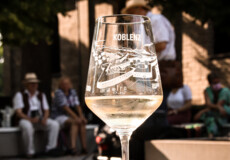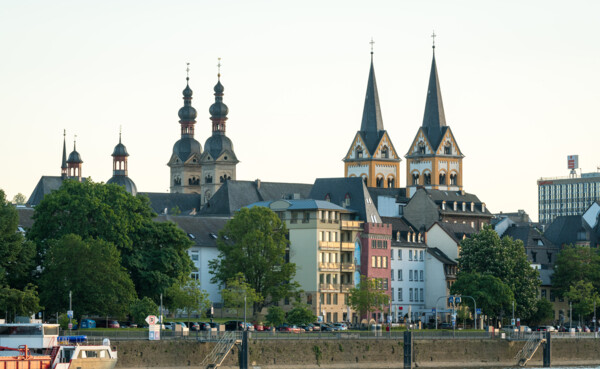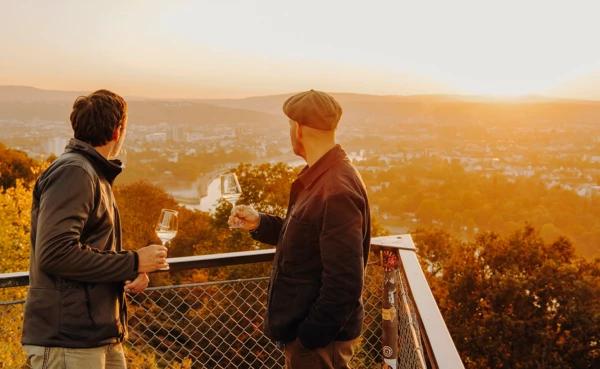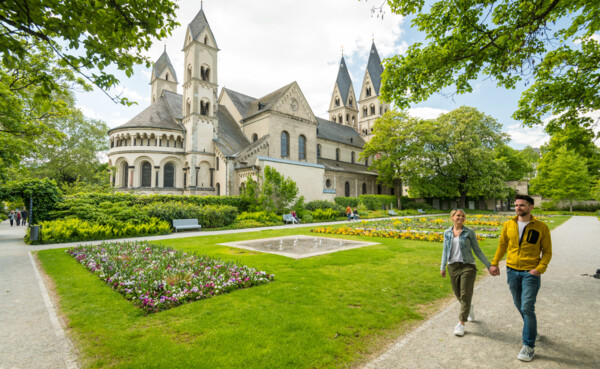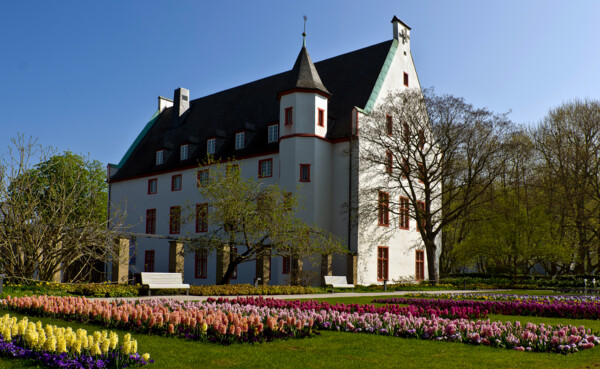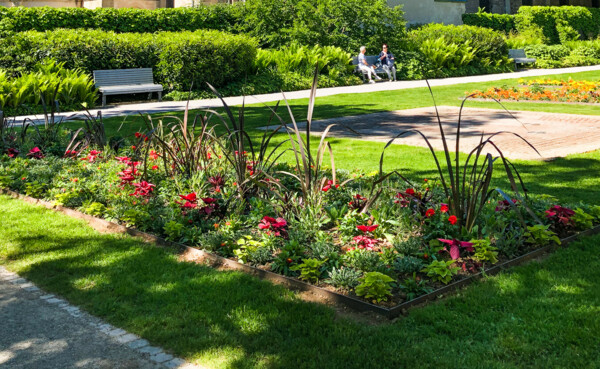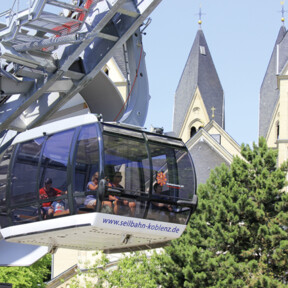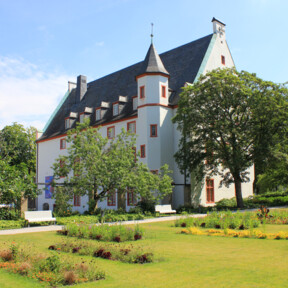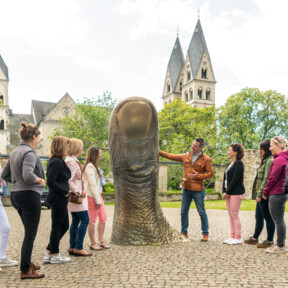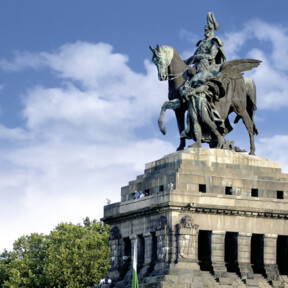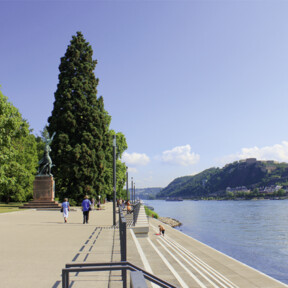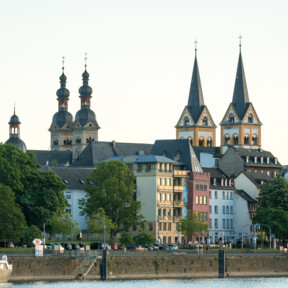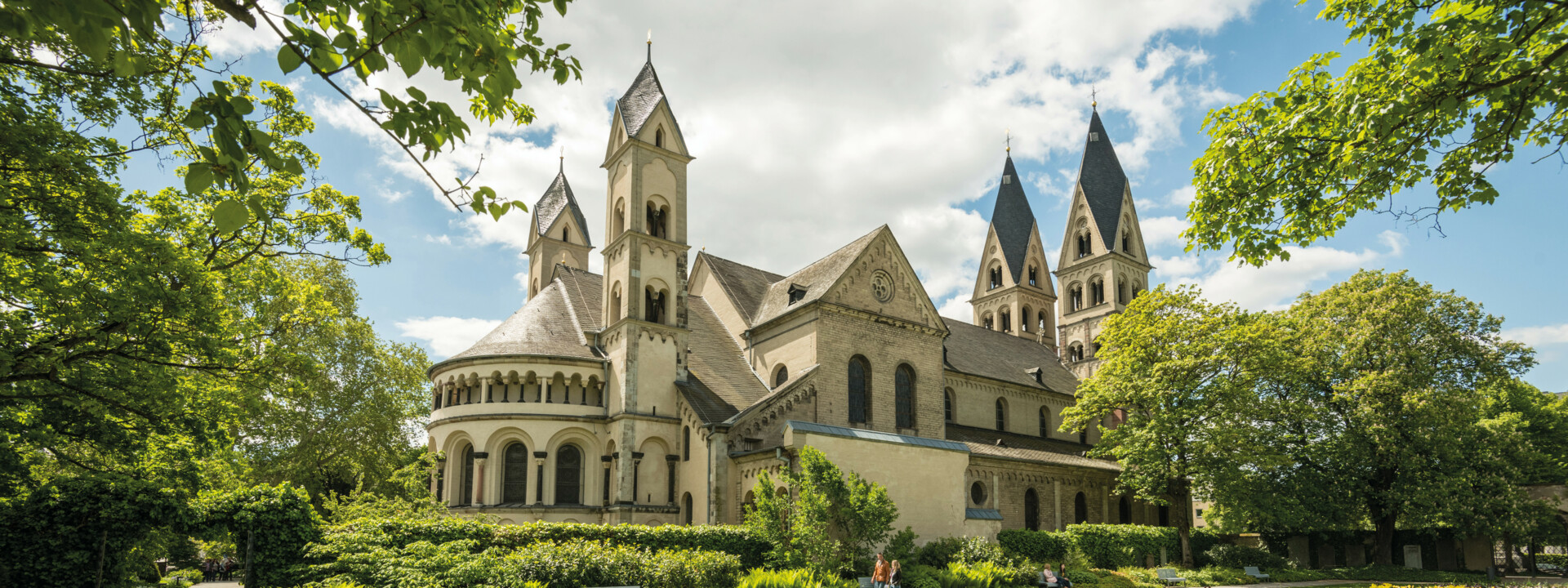
The St. Castor Basilica
Where kings and emperors met.
„Vue et approuvé par nous, le Commandant Russe de la Ville de Coblence.
Russian city commander, 01.01.1814
The St. Castor Basilica is the oldest preserved church in Koblenz. The collegiate church, consecrated in 836, was the scene of significant historical events. The monastery of St. Kastor was the meeting and arbitration place of emperors and kings as well as their descendants. In 842, the Romanesque church was the venue for the negotiations of the sons of Emperor Louis the Pious, which led to the partition of the Frankish Empire in the Treaty of Verdun the following year.
The building in its present form dates mainly from the middle of the 12th century. On July 30, 1991, Pope John Paul II elevated the Castor church to the status of basilica minor. Together with the Liebfrauenkirche and the Florinskirche, the St. Castor Basilica shapes the silhouette of the Koblenz old town.
"A Napoleon le Grand, an. MDCCCXII Mémorable par la Campagne contre les Russes sous la Préfecture de Jules Doazan."
(Eng.: To Napoleon the Great. 1812 commemorating the Russian campaign under the prefecture of Jules Doazan).
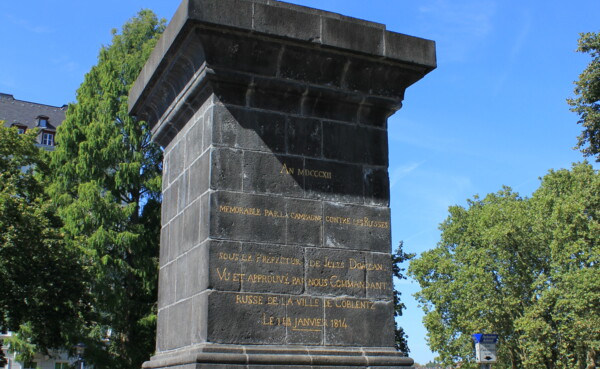
As is well known, the Russian campaign ended with a devastating defeat for Napoleon. The victorious Russian soldiers also came to Koblenz, which had been abandoned by the French. The new Russian city commander showed his sense of humor when, on January 1, 1814, he added his own inscription, in French of course. Beneath Doazan's inscription now reads:
"Vue et approuvé par nous, le Commandant Russe de la Ville de Coblence."
(Eng.: Seen and approved by us, the Russian commander of the city of Koblence)
Thus, he immortalized the memory of Napoleon's defeat and the end of the French occupation of Koblenz.
Tip: The botanical garden
